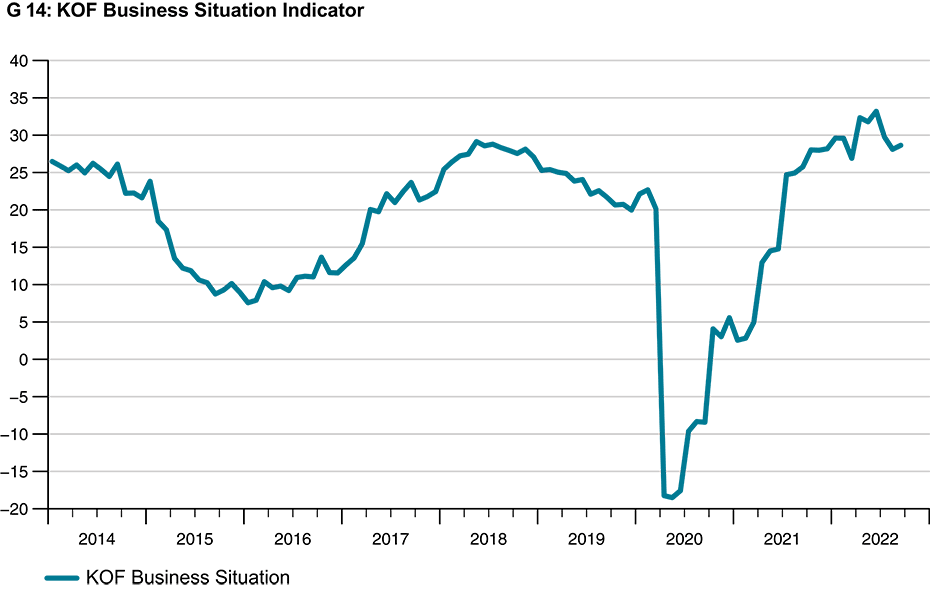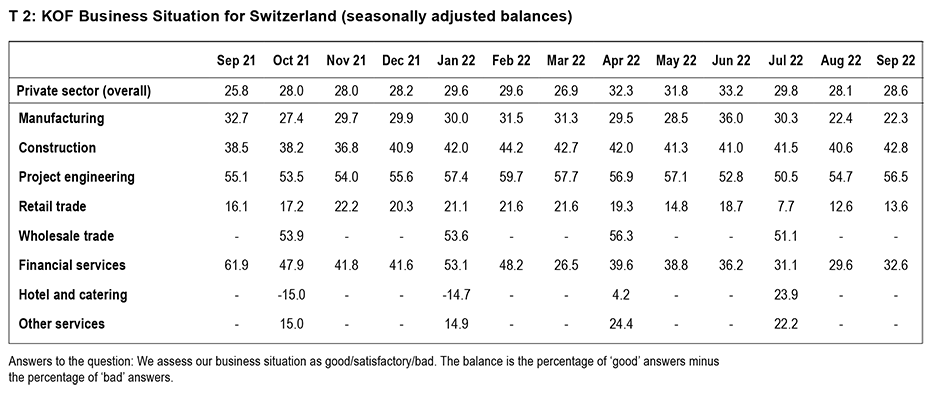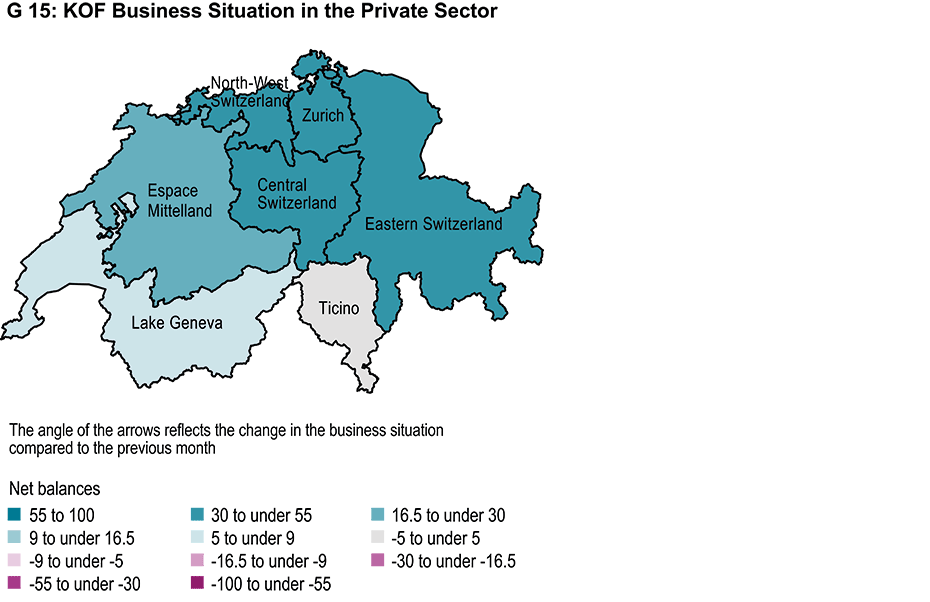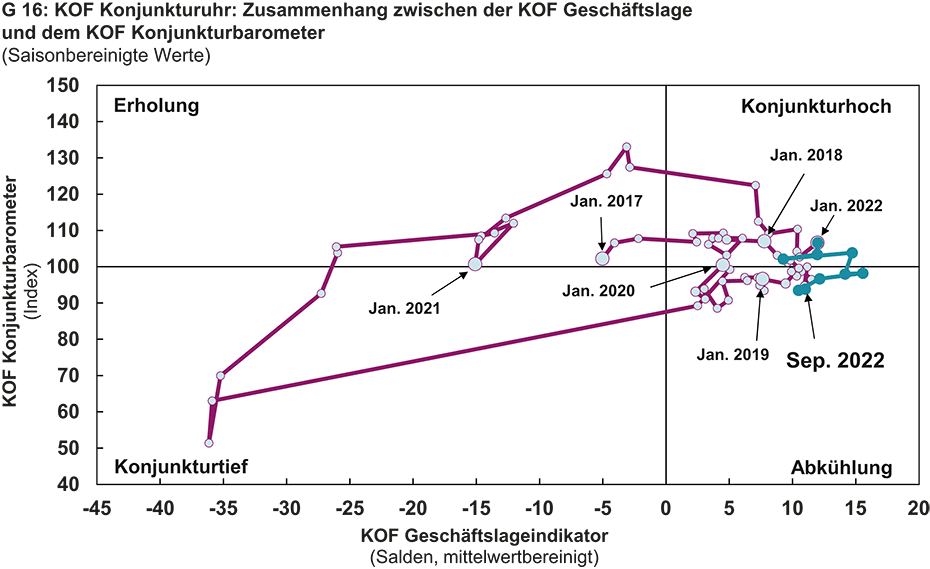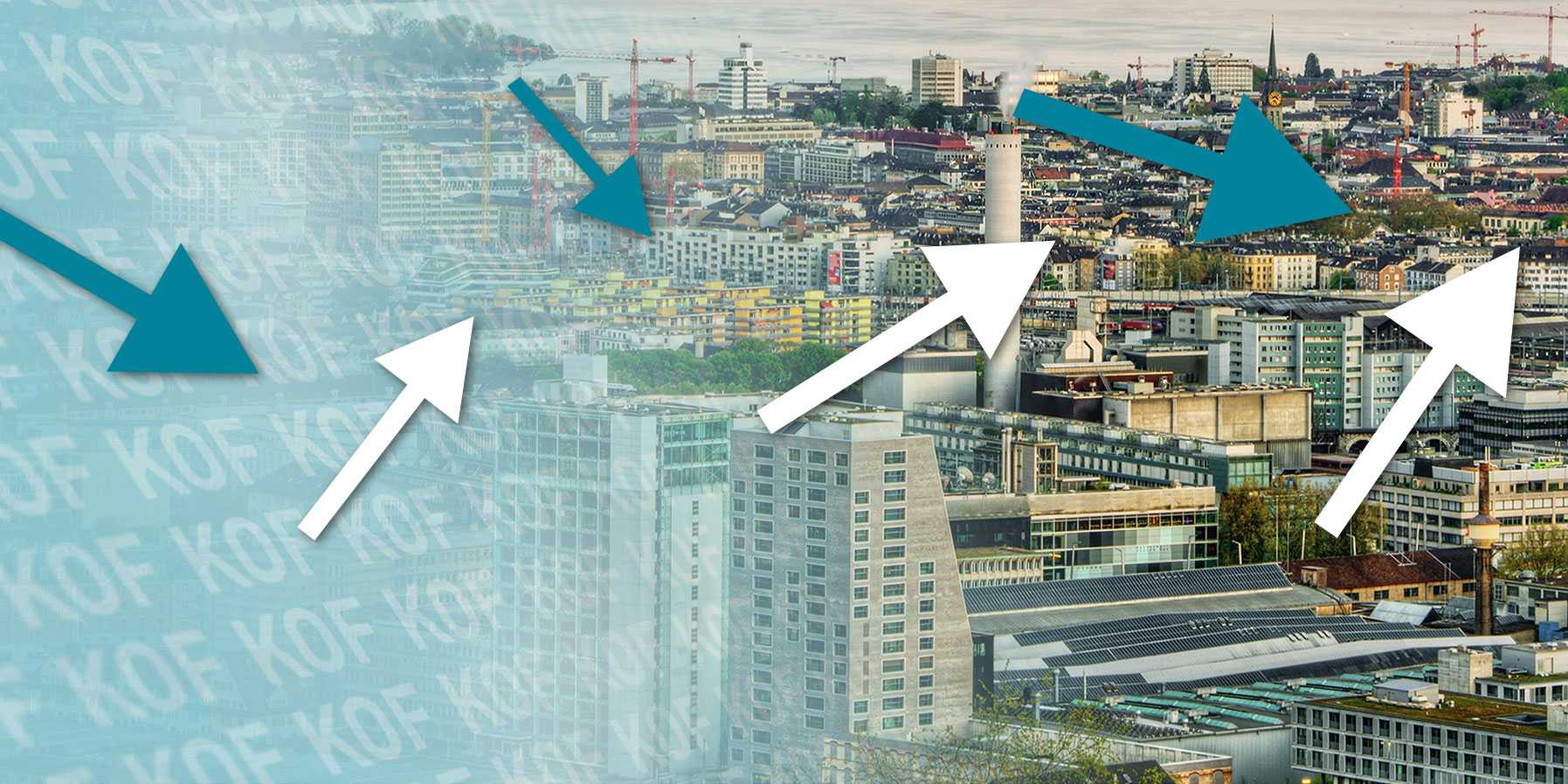
Business situation is not deteriorating any further
The KOF Business Situation Indicator recovered in September after suffering two consecutive declines. Although it rose slightly in September, it remains lower than it was in July. Firms still view their business situation as predominantly encouraging. Although the economy in Switzerland has cooled somewhat in recent months, companies continue to cope with this situation adequately.
Business in the two building-related sectors of project engineering and construction is improving again. Firms in the construction industry continue to plan widespread price increases. Although the problem of materials shortages remains significant, it is still tending to ease slightly. The Business Situation Indicator for the retail sector and for financial and insurance services is recovering modestly from the setbacks of previous months. Only in manufacturing has the Business Situation Indicator fallen very slightly. In September, however, the indicator managed to almost completely halt the sharp decline of the previous month. While business activity at export-led companies continued to decline, it is improving slightly among domestically focused firms. However, uncertainty about business going forward is higher than it was at the beginning of the summer, and order books – especially those of export-driven companies – are shrinking.
The business situation across the regions defined by the Swiss Federal Statistical Office (FSO) varied from one region to another in September. In Central Switzerland and Northwestern Switzerland it is now more favourable than it was in the previous month. It has hardly changed in Espace Mittelland, in the Lake Geneva region and in the Zurich region. It is slightly less encouraging than before in Eastern Switzerland and much less encouraging in Ticino.
The KOF Business Situation Indicator highlights companies’ current business situation. The KOF Economic Barometer, on the other hand, is an indicator of the economic outlook. The Business Cycle Clock shows that the economy was abruptly slowed by the pandemic in April 2020. After a rather disappointing start to 2021 the Swiss economy subsequently recovered. Although the economy continued to recover in the first few months of 2022, it slowed noticeably in the summer.
Explanation:
Chart G 14 shows the KOF Business Situation Indicator across all sectors included in the survey. The business situation of sectors that are only surveyed quarterly is kept constant in the interim months.
Chart G 15 shows the business situation in the main regions defined by the Swiss Federal Statistical Office. The regions are coloured differently to reflect their business situation. The arrows within the regions indicate the change in the situation compared with the previous month. An upward-pointing arrow indicates that the situation has improved compared with the previous month.
The Business Situation Indicator in the KOF Business Cycle Clock (chart G 16) is plotted against the KOF Economic Barometer. The indicator reflects the current business situation, while the barometer is a leading indicator of changes in activity. The clock can be divided into quadrants. During the recovery phase the business situation is below average but growth prospects are above average. At the peak of the economic cycle the situation and prospects are both above average. During the slowdown phase the situation is above average and the prospects are below average. At the bottom of the economic cycle the situation and outlook are both below average. Ideally the chart runs through the quadrants in a clockwise direction.
The KOF Business Situation Indicator is based on more than 4,500 reports from firms in Switzerland. Companies in industry, the retail sector, construction, project engineering and financial services and insurance are surveyed monthly. Businesses in the hospitality, wholesale and other services sectors are surveyed during the first month of each quarter. These firms are asked, among other things, to assess their current business situation. They can rate their situation as either 'good', 'satisfactory' or 'poor'. The net balance of their current business situation is the difference between the percentages of 'good' and 'poor' responses.
Further information about the KOF Business Tendency Surveys can be found on our website.
Contact
KOF Konjunkturforschungsstelle
Leonhardstrasse 21
8092
Zürich
Switzerland

